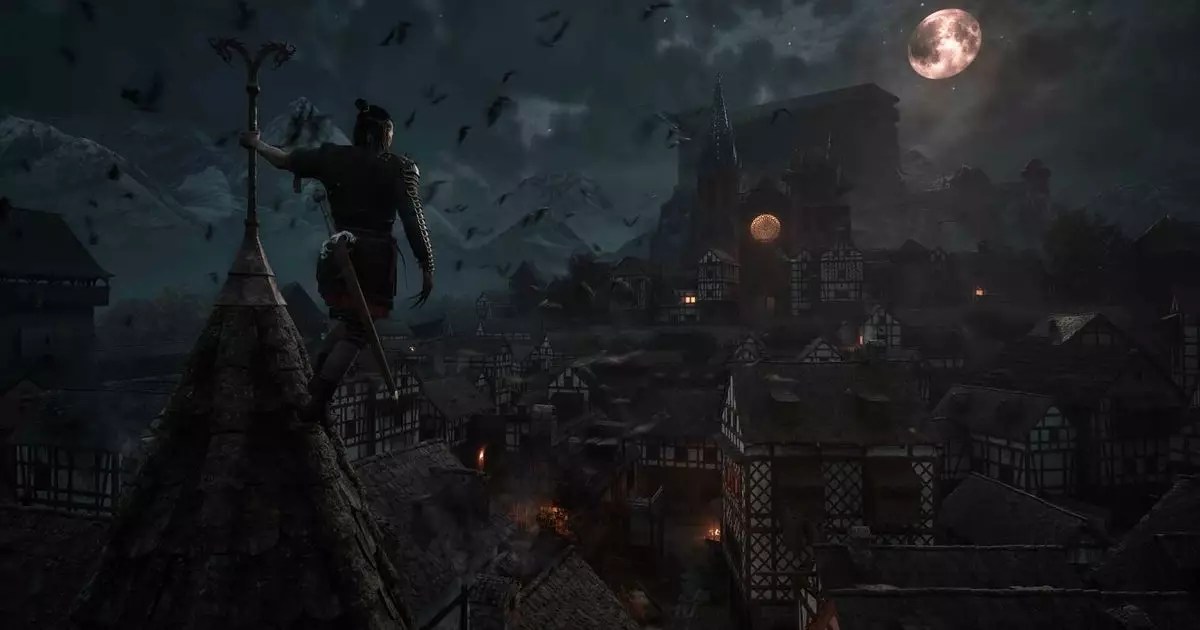The anticipation for “The Blood of Dawnwalker” is palpable, especially after the recent presentation by Rebel Wolves, a developer team composed of former developers from the iconic “Witcher 3.” This new vampire-themed RPG appears to encapsulate the essence of storytelling and intricate gameplay mechanics, channels the gothic allure of the genre, and revives our fascination with vampire lore. While the gameplay demo was just a taste of what’s to come in 2026, it opened a window into a richly designed world that seems poised to immerse players in its vampiric setting.
The pre-beta demonstration featured Daniel Sadowski, the game’s design director, as he showcased the game’s mid-development state. Set in the intricate city of Svartrau, players can expect a bustling locale divided into four boroughs, complete with a massive imposing castle. The grandeur of the medieval-style architecture seems to echo the complexity and depth that dedicated RPG fans crave. This strong foundation undoubtedly lays the groundwork for the larger meta-narratives that will unfold within the game.
The Central Conflict: A Personal Quest
At the heart of “The Blood of Dawnwalker” lies a gripping narrative: the rescue of Coen’s family from the clutches of a powerful vampire, Brencis, ruling from the fortress of Griefberg. This personal conflict serves not only as the primary quest but also feeds into the game’s overall themes of duty, family, and sacrifice. The reliance on time constraints—illustrated by a timer counting down days—introduces a palpable tension that resembles real-life urgency in planning and decision-making. While exploring ways to gather aid, engage with allies and plot the rescue will drive players to contemplate their actions deeply. This introduction of a race against time is not just a gimmick; it’s essential in making players feel the weight of choices they must make.
The developers have taken a bold step forward by crafting a day-and-night cycle that significantly alters gameplay mechanics. This feature brings a potential for variety that many RPGs often lack. For instance, it’s intriguing to consider how players must adapt their strategy based on the time of day, encountering different scenarios, allies, and enemies. The dichotomy of interactions—a priest in the day and bloodthirsty foes at night—encourages exploration and necessitates strategic thinking. This layered approach to gameplay mechanics hints at the deep narratives and moral ambiguities that will characterize “The Blood of Dawnwalker.”
Engaging Combat and Unique Abilities
Combat mechanics are undoubtedly central to any RPG experience and “The Blood of Dawnwalker” is no exception. Observations from the demo indicated a complex sword-fighting system, drawing comparisons to the combat style of “Kingdom Come: Deliverance.” While this system may intimidate some players, it presents an opportunity for deep engagement, skill mastery, and rewarding gameplay as players gradually develop their combat skills. However, the challenge lies in balancing the need for skill with the desire for enjoyment; if the mechanics are too punishing, they could alienate newcomers and detract from the game’s broader appeal.
The excitement reached a crescendo during the boss battle with the character Xanthe, showcasing some innovative mechanics. The idea of players facing an enemy with a fatal ability like “boiling blood” injects an element of unpredictability and urgency. This mechanic elevates standard boss fights and poses exhilarating stakes; losing could lead to an explosive and visually grotesque demise, amplifying the drama. This clever design choice could foster a more exhilarating and engaging experience as players are driven to act swiftly or face dismemberment in blood-splattered glory.
Beyond the Horizon: Expectations and Potential
As “The Blood of Dawnwalker” moves toward its 2026 release, expectations are soaring. There is an undeniable blend of factors—immersive storytelling, dynamic gameplay, and rich world-building—that position it to resonate deeply with fans of both RPGs and vampire lore. What stands out most, however, is the ambition behind the project, indicated by the depth of craft displayed even in this early glimpse.
The developers are keen to promote player choice, empowering gamers to affect their gameplay experience while navigating the complexities of morality and consequence. This approach could yield a mini-epic that invites various interpretations and paths, enhancing replayability—a rare gem in today’s gaming landscape. The excitement surrounding the game is not just about the promise of blood-soaked gameplay; it’s about revisiting the human condition through the lens of fantasy. In a world where games are often criticized for lack of depth, the layers hinted at in this title leave an exhilarating sense of anticipation in the air.


Leave a Reply